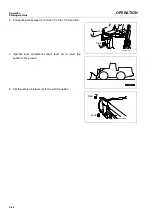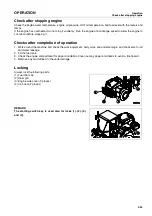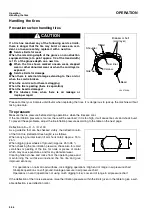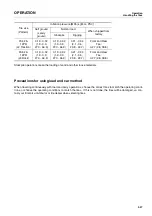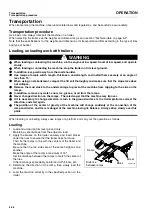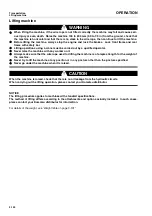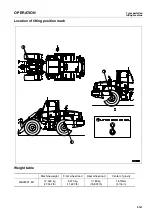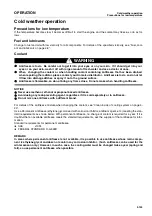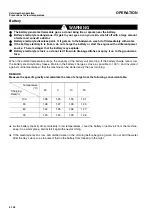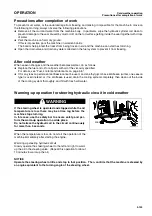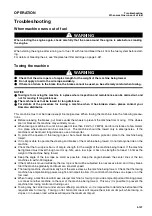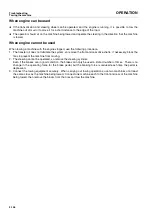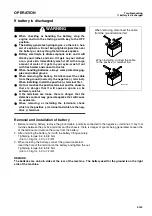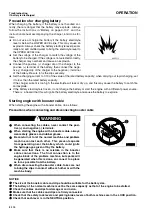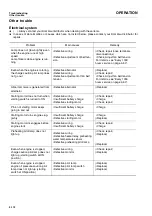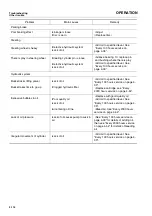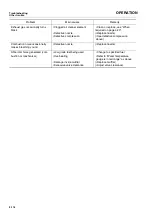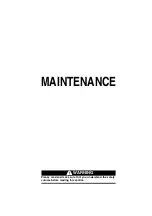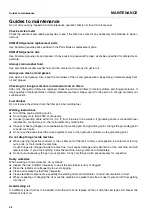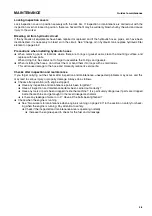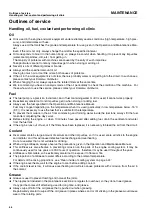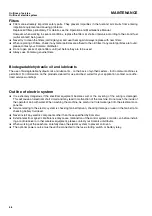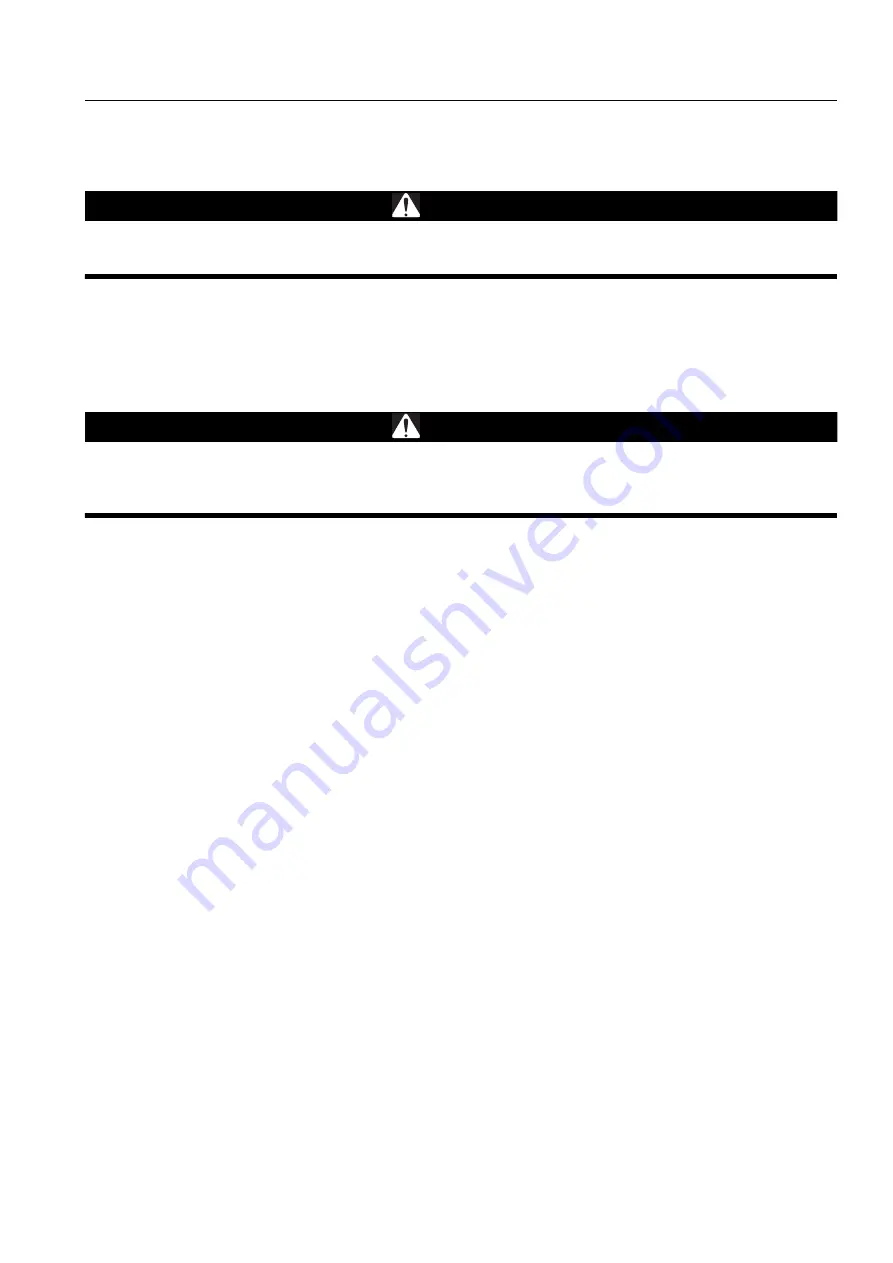
OPERATION
Troubleshooting
When machine runs out of fuel
3-107
Troubleshooting
0.
When machine runs out of fuel
0.
WARNING
When starting the engine again, check carefully that the area around the engine is safe before cranking
the engine.
When starting the engine after running out of fuel, fill with fuel and bleed the air from the fuel system before start-
ing.
For details of bleeding the air, see “Replace fuel filter cartridge on page 4-48“.
Towing the machine
0.
WARNING
Check that the wire rope is of ample strength for the weight of the machine being towed.
Do not apply a load to the wire rope suddenly.
If there is a failure in the brake line, the brakes cannot be used, so be extremely careful when towing.
NOTICE
Towing is for moving the machine to a place where inspection and maintenance can be carried out, and
not for moving it long distances.
The machine must not be towed for long distances.
For details of the procedure for towing a machine when it has broken down, please contact your
Komatsu distributor.
This machine must not be towed except in emergencies. When towing the machine, take the following precau-
tions.
Before releasing the brakes, put blocks under the wheels to prevent the machine from moving. If the wheels
are not blocked, the machine may suddenly move.
When towing a machine, tow it at a low speed of less than 2 km/h (1.2 MPH), and for a distance of a few meters
to a place where repairs can be carried out. The machine should be towed only in emergencies. If the
machine must be moved long distances, use a transporter.
To protect the operator if the towing rope or bar should break, install a protector plate to the machine being
towed.
If it is impossible to operate the steering and brakes of the machine being towed, do not let anyone ride on the
machine.
Check that the tow rope or bar is of ample strength for the weight of the machine being towed. If the machine
being towed must travel through mud or up hills, use a tow rope or bar of a strength of at least 1.5 times the
weight of the machine being towed.
Keep the angle of the tow rope as small as possible. Keep the angle between the center lines of the two
machines to within 30 degrees.
If the machine is moved suddenly, the tow rope or bar will be subjected to an excessive load, and it may break.
Start the machine gradually and travel at a constant speed.
The towing machine should normally be of the same class as the machine being towed. Check that the towing
machine has ample braking power, weight, and rimpull to allow it to control both machines on slopes or on the
tow road.
When towing a machine downhill, use a larger machine for towing to provide ample rimpull and braking power,
or connect another machine to the rear of the machine being towed. This way it is possible to prevent the
machine from losing control and turning over.
Towing may be carried out under various differing conditions, so it is impossible to determine beforehand the
requirements for towing. Towing on flat horizontal roads will require the minimum rimpull, while towing on
slopes or on uneven road surfaces will require the maximum rimpull.
Summary of Contents for WA250PT-5H
Page 2: ......
Page 3: ...FOREWORD 11...
Page 16: ...Contents FOREWORD 1 14...
Page 24: ...SAFETY 2 2...
Page 58: ...Precautions with tires SAFETY Precautions when storing tires 2 36...
Page 60: ...OPERATION 3 2...
Page 233: ...TECHNICAL DATA 45...
Page 235: ...TECHNICAL DATA Technical data 5 3...
Page 250: ...Central lubrication system ATTACHMENTS OPTIONS 6 14...
Page 251: ...INDEX 67...
Page 252: ...INDEX 7 2...
Page 255: ...Index 7 5...


